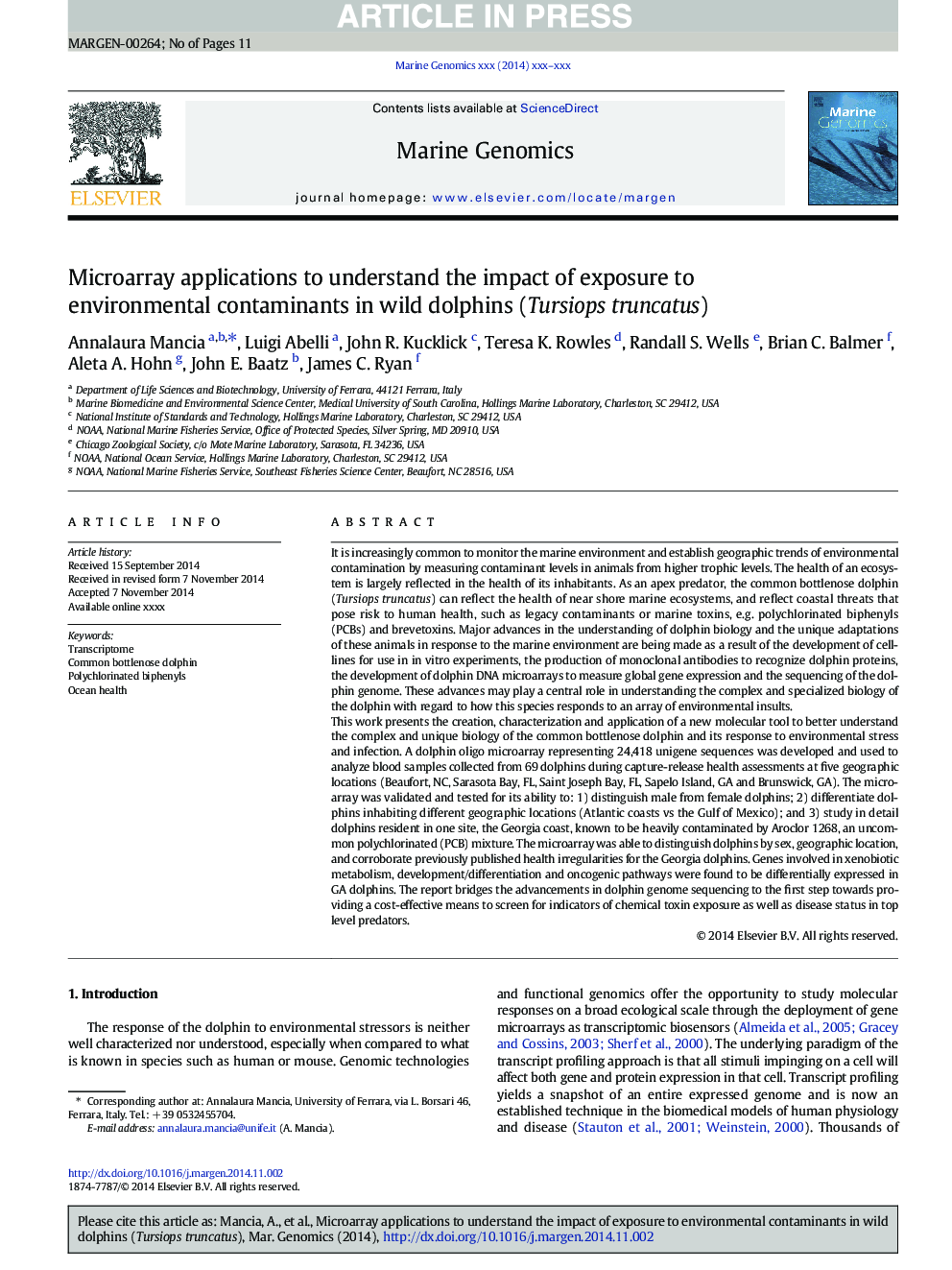| Article ID | Journal | Published Year | Pages | File Type |
|---|---|---|---|---|
| 8388546 | Marine Genomics | 2015 | 11 Pages |
Abstract
This work presents the creation, characterization and application of a new molecular tool to better understand the complex and unique biology of the common bottlenose dolphin and its response to environmental stress and infection. A dolphin oligo microarray representing 24,418 unigene sequences was developed and used to analyze blood samples collected from 69 dolphins during capture-release health assessments at five geographic locations (Beaufort, NC, Sarasota Bay, FL, Saint Joseph Bay, FL, Sapelo Island, GA and Brunswick, GA). The microarray was validated and tested for its ability to: 1) distinguish male from female dolphins; 2) differentiate dolphins inhabiting different geographic locations (Atlantic coasts vs the Gulf of Mexico); and 3) study in detail dolphins resident in one site, the Georgia coast, known to be heavily contaminated by Aroclor 1268, an uncommon polychlorinated (PCB) mixture. The microarray was able to distinguish dolphins by sex, geographic location, and corroborate previously published health irregularities for the Georgia dolphins. Genes involved in xenobiotic metabolism, development/differentiation and oncogenic pathways were found to be differentially expressed in GA dolphins. The report bridges the advancements in dolphin genome sequencing to the first step towards providing a cost-effective means to screen for indicators of chemical toxin exposure as well as disease status in top level predators.
Related Topics
Physical Sciences and Engineering
Earth and Planetary Sciences
Earth and Planetary Sciences (General)
Authors
Annalaura Mancia, Luigi Abelli, John R. Kucklick, Teresa K. Rowles, Randall S. Wells, Brian C. Balmer, Aleta A. Hohn, John E. Baatz, James C. Ryan,
